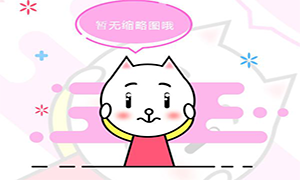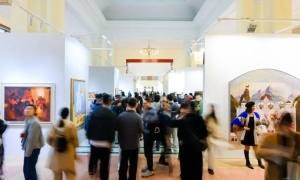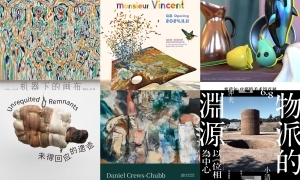About Relations among Birds, Beasts and Human Beings
——孟 涛、邱光平联展述评
—— Commentary on joint exhibition by Meng Tao & Qiu Guangping
王 林
Wang Lin
孟涛和邱光平要做联展,征求我的意见,我很赞成。不仅仅是因为他们同住成都浓园艺术区,交往甚密,是很好的朋友,更是因为他们俩的作品一个以鸟为主要对象,一个以马为主要对象,都和传统花鸟画题材有关,尽管画风差别甚大,却有着值得探讨的共同话题。这就是:在当代艺术中如何转换中国资源,造就真正源自本土文化而不是尾随西方潮流的创作成果。
Meng Tao and Qiu Guangping intend to hold a joint exhibition, and they come to me for some advice. I cannot agree on this any more, because they are intimate friends and both living in Chengdu Nongyuan International Art Village. Further more, both their works are related to traditional Chinese flower-and-bird painting, one focusing on birds, and the other on horses. Although their painting styles distinguish a lot from each other, there is still a common subject that is worth exploration. That is, regarding contemporary art, how to transform traditional Chinese resources into creative works which veritably originate from local Chinese culture rather than simply follow the suit of Western trend.
孟涛是学国画出身的,毕业后一直画带有山水画意味的风景油画,借取水墨画的皴法效果,擅长于用细线平铺的肌理来构成平面化的空间关系。近几年转向花鸟,也是因其臻于娴熟的油画技法,特别适合描绘禽鸟的毛羽。一个画家要转变艺术观念,并不靠一时的主意,而是思想、感觉、画法多方面长期积累的结果。说孟涛转向花鸟油画,其实是只有鸟没有花,花的意象为鸟的伤痕所替代。画面上呼应蓝绿孔雀的,不是鲜艳的牡丹,而是血淋淋的创口与内脏。这使我们想起广东人吃猴脑和成都人吃鹅肠,都是从活生生的动物身上直接取用,动物的惨叫与食客的饕餮所衬托的,只有人的冷漠与残忍。当然,难以解决的问题是人要生存,就不能不杀害动物。但人之为人,乃是因为能反省自身行为,所以从自身生态环境出发,人要去保护濒危动物,保护鸟类,保护生物的多样性。人作为精神存在,意识到自身生命与其他生命的共通性,所以要敬畏自然、珍惜生命,即便是取食动物,也决不能虐待动物。因为任何虐待生命的行为都是对人性的伤害都是对人的精神心理的伤害。孟涛的作品从不画人,但人就在画外,因为那些美丽禽鸟的惨状都是人之所为。作为一个艺术家,他的任务不是谴责,不是道德批判,而是如何在感觉、感受中去触及并揭示人的视觉心理,使那些被习惯钝化的公理与常识,重新成为每一个观画者必须直面的问题。他用了很多心思把作品画得如织锦一般辉煌而灿烂,丝丝入扣的笔触、鲜活亮丽的色彩、精心讲究的构图,一切都像宫廷花鸟画那么富贵、那么堂皇。只有当你为其所诱,逼视画面的时候,才会发现你正面对着花团锦簇中的血腥,甚至那些血腥的伤口仍然漂亮好看!画中的鲜红与蓝绿,通过中间色彩和深浅浓淡的过渡是如此协调,显然画家无意于强化色彩反差所构成的对比,他想在古典的和谐的审美方式中突然逆转,让观者身心猛地感到痉挛,让心理惊诧和精神震动不可避免地从内心喷出。就这样,传统工笔花鸟的精细之感在画家笔下重获爱惜,不是在文人书案上,而是在现实屠场里,就像是母亲抚摸着死去儿子的头发,和过去一样平静,悲哀到已无任何表情和言语。
Meng Tao majored in traditional Chinese painting at university. After graduation, he has been focusing on landscape oil-painting in style of traditional Chinese painting of mountains and waters. By virtue of techniques of representing irregular surfaces in wash painting, he is good at constructing a spatial relationship in plane view by means of tiling textures with fine lines. In recent years, as his oil-painting skills have grown mature, which is especially suitable for depicting birds’ plumage, he turned to flower-and-bird oil-painting. However, the focus change of him is resulted from the accumulation of thinking, sense, painting techniques and etc. in a long run, rather than from a transitory impulse. Moreover, in Meng’s flower-and-bird oil-painting works, there are only image of birds, and that of flowers is expressed as the scars of the birds. What echoes the bluish green peacock are the gory wound and viscera in stead of bright and beautiful peonies. This tableau reminds people of the scene that Cantonese eat fresh monkey brain and Chengdu people eat goose intestines, which are taken directly from animals alive. The contrast between the crying animals and the greedy gluttons reflects the cold blood and cruelty of human beings. Of course, as is known, human beings have to survive on animals, but they also examine their own behaviors. To protect the living environment, they will try to protect the endangered animals and birds, to maintain the diversity of living creatures. This is why human beings are human. As a spiritual existence, human beings realize the commonness between themselves and other creatures, so they revere the nature and cherish lives. Even though they eat animals, they never have any reason to maltreat them. Any maltreatment to creatures will destroy humanity as well as spirit and mentality of human beings. Human beings never appear in Meng’s works, but they are watching the tableau. All the misery in the painting is conducted by human beings. Being an artist, Meng’s duty is not to condemn nor criticize morally, but to find from sense and feelings the approaches to discover and reveal human beings’ visual psychology, to bring a revival to truth and common sense that are vanishing in habits, which everyone who watches the work has to directly confront. Meng pays great a lot of energy to weaving his canvas into gorgeous brocade, in which refined strokes, bright colors, and meticulous composition make the work as splendor and grandiose as an imperial flower-and-bird painting. Only when you are attracted by the tableau to stare at it, can you find the bloodiness in the brilliant splendor. And even the bloody wounds, then, are still so attractive. The bright red and bluish green in Meng’s works are so harmoniously balanced by smooth transition of intermediate shades. Apparently, the painter doesn’t mean to emphasize on the contrast between the two bright colors. What he wants is a sudden reversion in the classical and harmonious aesthetic, to render a convulsion in the watchers’ body and heart and make their surprise and tremor gush from heart. In this way, the sense of refinery in traditional Chinese meticulous flower-and-bird painting regains its vigor and appreciation in Meng’s brush. This is not a tale in writer’s pen, but a true story that does happen in the execution ground, where a mother is fondling her late son’s hair, as peaceful as usual, but so mournful that she is expressionless in her dead silence.
艺术观念的表达必须在感觉中得到证实,传统资源的利用也只有在当代文化意识和个人创作方法中才能实现,孟涛在这方面的探索是很具体、很实在,也很有深度的。
The expression of artistic concepts has to be proven through sense, and the utilization of traditional resources can only be achieved in contemporary cultural concepts and personal manners of creation. With regard to this aspect, Meng Tao has done a concrete and practical exploration, which is also of much depth.
稍有不同的是,邱光平尽管以画马出名,但与马作为写实对象及正面象征的绘画传统没什么关系。他是学油画出身,受现代艺术影响,一出手就有很强烈的表现性。笔下的马总是为风云所驱,为野火所逼,处在极端紧张的状态之中。或者是虎狼追逐,或者是鹰犬袭击,或者是单骑逃窜,或者是群体狂奔,充满喧嚣、惊悚和恐惧,甚至不无邪恶。即便是“马放南山”,即便是“落叶黄昏”,也永远不得安宁。邱光平的作品给人以梦魇之感,其马其人也极富象征性,但在超现实主义和表现主义两种倾向间他侧重后者。如果注意分析,你会发现他很少任意组合形象以造就荒诞梦境,相反,他总是在假设的场景中,以极度透视来造成对象的夸张变形,达到主观化的象征性。首先是形体,激烈扭曲的身躯,呲牙咧嘴的马首,表情十分丰富,充满不可遏制的欲念。而不时出现的骑手作为纵火者,形似空心的稻草人,不仅和烈焰围困的场景构成悖谬关系,而且和马代表的内心冲动构成对比关系。在悖谬的对比中,现实被空壳化,而精神则被实体化,情感表达成为视觉形象本身。更进一步,画家通过主观化的色彩处理,把观者置于情感激发的过程之中。病态的神经质的黄色,在暗红色或灰蓝色、灰白色的衬托下仿佛在燃烧,在沸腾。面对邱光平的作品,你是不可能静观的。
Qiu Guangping’s painting is slightly different. Qiu is famous for his horse oil-painting, but his style has little to do with the traditional way in which horse is a realistic object and positive symbol. Qiu specializes in oil-painting, with a strong expressiveness under the influence of contemporary art. Horses under his brush are always driven by wind and cloud, or compelled by wild fire, in an extremely nervous state. His horses are being chased by tigers and wolves or attacked by falcons and hounds, escaping solely or running wildly in crowds. The tableau is full of outcries, thrills and fears, even wickedness. Even the “Cloudy Peace” (Qiu Guangping, 2008, Oil on canvas) in “The Dusk” (Qiu Guangping, 2008, Oil on canvas) is still restrained. There is no absolute eternal tranquility. Qiu’s works imply nightmares. His horses and he are more a very symbol of expressionism than of surrealism. Through analysis, it will be found that he rarely portrays absurd dreams with random combination of images. Instead, he likes to gain an exaggerating transformation of objects through extreme perspective in an assuming circumstance, to achieve a subjective symbolism. The body comes first. All the violently twisted horse bodies, toothy horse heads and rich facial expressions extend the unrestrained desires. The rider appears sometimes as fire-raiser in a shape of hollow scarecrow, which not only opposes sharply to the surrounding roaring flames, but also becomes a contrast to the internal impulse symbolized by the horses. In the opposite contrast, the reality is hollowed, while the spirit is materialized, and the emotion itself is expressed as a visual image. Further more, through subjective color processing, the painter puts the watcher in the burst of emotions. Yellow, which seems sick and neurotic, is burning and boiling against the dark red, grey blue and grey white. In front of Qiu’s works, it is difficult to stay cool.
邱光平以马和与之有关的既有图像(如《阿尔卑斯的神话》)作为符号象征,再加上色彩隐喻(如《红色诱惑》系列作品)的表达方式,揭示了自我在当下的尴尬处境:一面是疯狂的商品世界,一面是严格的社会控制,如此夹击之下,中国人个体精神的生长的确充满困惑。在这里任何英雄主义的幻想毫无意义,也许只有通过对野性的呼唤,才能让我们重返精神心理的真实。
With horses and related existing images (i.e. The Myth on Alps, Qiu Guangping, 2009, Oil on canvas) being the symbol, and the expression through color metaphors (i.e. Series of The Flaming Joy, Qiu Guangping, 2007, Oil on canvas), Qiu Guangping describes the hot seat where Ego is sitting on: on one side is the crazy world of commodities, and on the other side is the strict social control. Under such converging attack from the two sides, in China, individual spirits do fall into deep confusion when growing up. Under this condition, any kind of heroism fantasy is meaningless. The only possible way back to our spiritual and psychological truth is the call of the wild.
还应指出一点,邱光平和孟涛从不同角度对红色象征如此敏感并切入身心感受,显然和生存环境有关,今日艺术已难以摆脱政治影响而独善其身。而自我表现向社会和历史的开放,正是当代艺术的特征之一。这种开放性不仅是意识的,也同时是媒介的。邱光平的圆雕和孟涛的浮雕、苏绣,一方面延续并拓展了他们的创作观念,另一方面,又在不同样式和材料的制作中磨炼并深化了他们的艺术语言。特别值得注意的是他们根据展示空间创作的装置作品。邱光平的雕塑性装置“五马分尸”置于圆厅之中,上下观看,其空间张力是平面作品所不能比拟的,而拉扯、撕裂工业机械的隐喻,突现了传统与工业化的较量,更是把狂马于人的象征性推向极端。孟涛的绘画性装置则以彩绘沙发和苏绣布置,把“美丽的血腥”与“血腥的美丽”日常化,让人在习以为常、司空见惯的浏览过程中产生陌生与距离,使艺术问题直接介入到生活问题之中。因为是在博物馆出展,他们有意无意将自己的某些作品文物化,使之更具有现场性。孟涛的浮雕本来就像是开方发掘的文物显现,邱光平的陶瓷马首以碎片及粘补的方式陈列,自然和环境有别样的沟通。他们无论在创作题材、文化意识、制作手段和展示方式上,都不约而同
地表现出和历史文化的有意关联。这种倾向在青年艺术家作品中日渐增多,是中国当代艺术创作中非常可喜也值得关注的现象。
Another thing I would like to point out is that, the reason why both Qiu Guangping and Meng Tao, from different angles, are so sensitive to red symbols and inject their inward emotions into the works is that, it is related to the living environment. Nowadays, it is difficult for art to stand alone from politics. On the other hand, self-expression open to the society and history is just one of the symbols of contemporary art. This kind of openness not only refers to the concept, but also works as a medium. Qiu’s full relieves and Meng’s relieves and Suzhou embroideries, are a continuity and expansion of their creative concepts, and intensify their artistic expression in various patterns and materials as well. A most special noteworthiness is their installations designed on the basis to exhibition space. Qiu’s “Split” (Qiu Guangping, 2009, Sculpture installation), a sculpture installation, is laid in a round exhibition hall for top-to-bottom view, which possesses an unparalleled tension that planar works cannot do. The metaphor in the dragged and tore industry machines accentuates the contest between tradition and industrialization, which pushes the symbolization of crazy horses for human to an extreme. Meng, through arrangement of colored sofas and Suzhou embroideries in his painting installation, shows his “beautiful bloodiness” and “bloody beauty” in a common and ordinary manner, to make people feel a sense of distance and strangeness when looking at the work in a habitual and accustomed way, to reach the purpose of directly emerging art into life. Since this exhibition will be held in a museum, they try to make the works like historic relics consciously or unconsciously, in order to make the exhibition more live. Meng’s relieves look like excavated relics, and Qiu’s horse heads are made up of stuck china fragments. Thus the nature communicates with the environment in a particular manner. The two artists share a lot in common on intentionally connecting artistic works to history and culture, such as subject selecting, cultural concepts, techniques, exhibiting ways, and etc. This trend, which is growing among young artists, is such a delightful and notable phenomenon for contemporary art creation in China.
展览命名为“禽兽人间”,是我的主意,如果要解释,一是禽兽在人间的遭遇;二是人间有时禽兽不如;三是质问人与禽兽该如何相处。题目而已,仅为提示。看官之娱、观者之思,全在于作品本身。
As I suggested, this exhibition is named as “Fur and Feather, with Man”. Firstly, we would like to reveal the suffering of animals in Man’s world. Secondly, we want to point out how immoral the human beings are at times. Lastly, we question about the right way for human beings to live with other living creatures in the world. Well, the title is just for reference. The amusement and thinking are to be arisen by the works themselves.
2009年11月6日
November 6, 2009
四川美院桃花山侧
By the side of Peach Hill in Sichuan Fine Arts Institute
【编辑:霍春常】






















